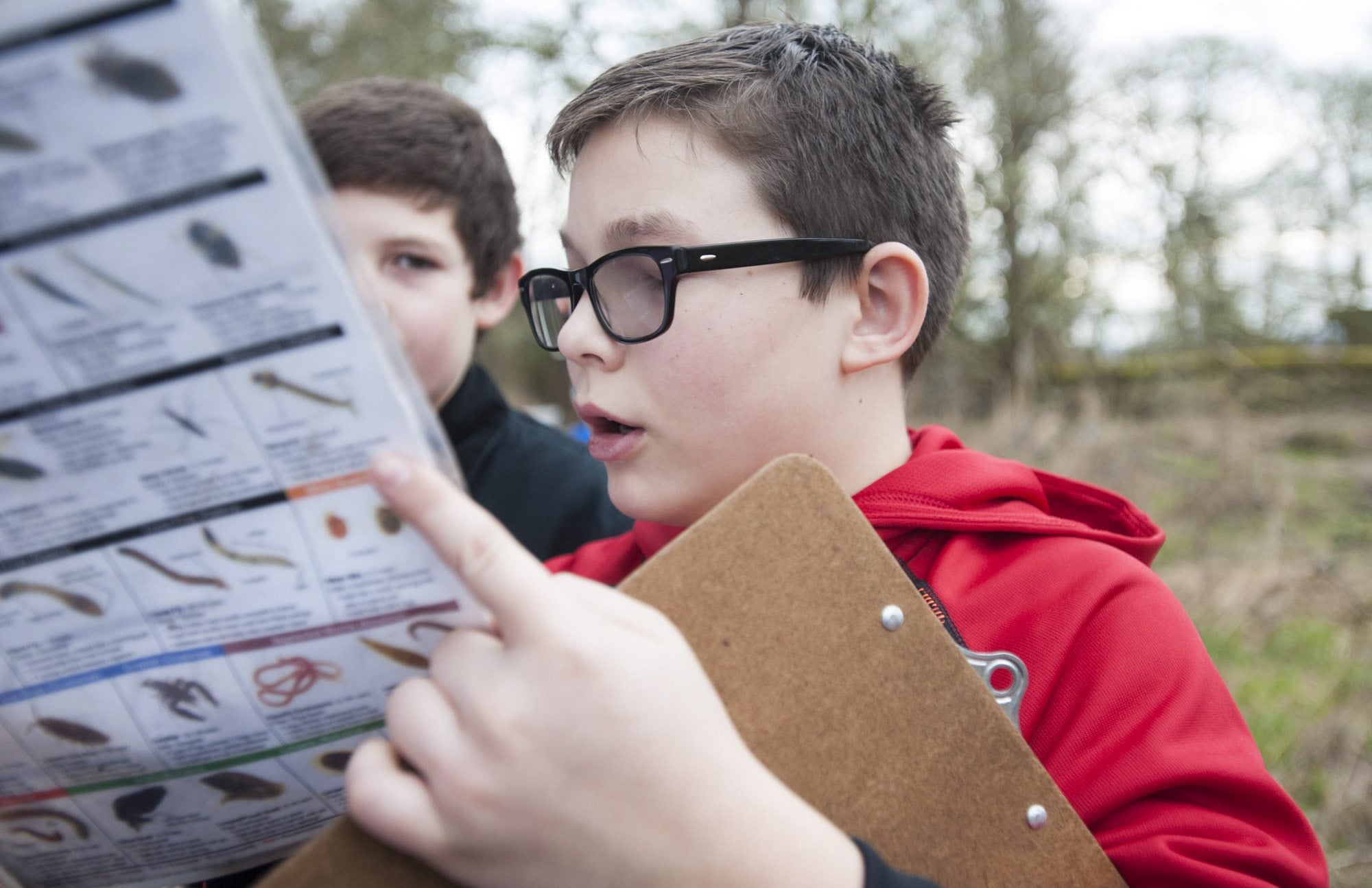When Kristy Schneider started working at La Center Middle School about 17 years ago, she joined the Wetlands Club, in which teachers and students visit La Center Bottoms to explore and plant trees.
Whenever she visits now, she can see the tall trees running along dikes at the wetlands that were just “little sticks” when she planted them.
“It’s fun to look back at that,” Schneider said. “Telling that story to the kids, it really brought to light that they could be a part of this.”
Schneider hoped to show her students what they could do at the bottoms on Thursday, when she and 130-plus sixth-graders spent their day in the wetlands working with members of the Lower Columbia Estuary Partnership. The students rotated activities throughout the day, with each group led by a different estuary worker. They planted trees, pulled invasive species, bird-watched, tested water quality and went for a hike around the wetlands, which are near the school’s campus.
“A big part of our program is working with local youth, whose job it’s going to be to be the future leaders and stewards of places like this,” said James Sterrett, an environmental educator with the estuary partnership. “Because of the planting, we want them to visit and watch the trees grow. We hope they get to love these places and will come back.”
Schneider, a science teacher, takes her classes to the wetlands once a month to test the water quality, and look at stream health and macroinvertebrates in the water. The partnership reached out to the school to see if students could join them one day while members were working on a restoration project at La Center Bottoms.
The partnership’s educators visited the school last week to teach students about watersheds, invasive species and how to identify birds. Schneider said it’s always good to show students what they learn in the classroom doesn’t have to stay there.
“Science isn’t just done in the classroom,” she said. “Scientists go out and do field work.”
Allison Johnson, 11, and Ciara Hoover, 12, both liked getting out of their class for the day, especially because they got to plant trees and work out in nature.
“I love doing yard work,” Ciara said. “It gets me outside.”
Allison frequents the wetlands, and said she liked helping fix them up.
“It’s a nice and peaceful place, especially when my whole class isn’t here,” she said. “It calms me down.”
Jennie Klein, education programs manager with the Lower Columbia Estuary Partnership, said her group of roughly 25 students were really excited to go out and work in the bottoms. In a 40-minute time period, they planted about 200 cottonwood and willow trees. She said she and other partnership members work with students every day, going out in the field with students three days a week and teaching them in the classroom two days a week, on average.
Klein said it’s relevant work for the students to do, because they’re working in their own backyards.
That’s a big reason why Schneider and the rest of the sixth grade teachers wanted their students to spend the day in La Center Bottoms.
“The wetlands are adjacent to their school, and it’s a big part of the community,” Schneider said. “It’s important they understand all they have in the environment here, and what it takes to keep it pristine. They’re a part of the restoration.”




